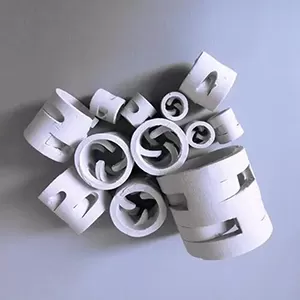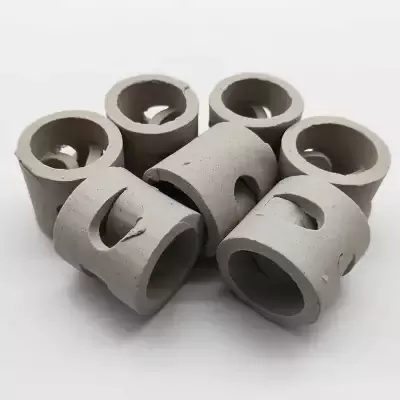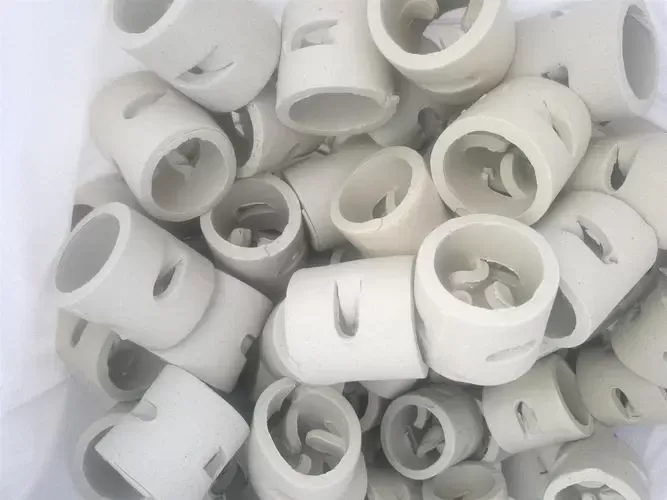The ceramic pall ring packing is a type of open-hole ring-shaped packing developed based on the ceramic Raschig ring. Each layer of the window holes has 5 lobes, and each lobe is inwardly curved towards the center of the ring. The positions of the upper and lower layers of window holes are opposite and offset. Generally, the open area accounts for about 30% of the total area of the ring wall, allowing gas and liquid to pass freely through the window holes in the packing tower.

In terms of performance, the high-temperature resistance and wear resistance of ceramic pall rings make them play a significant role in industrial catalysis, enhancing production efficiency and reducing energy consumption. Therefore, due to their unique characteristics and advantages, ceramic pall rings are widely used in the fields of chemical engineering and environmental protection.

The ceramic pall ring is renowned for its outstanding corrosion resistance and high-temperature tolerance. In industries such as chemical engineering and environmental protection, corrosive media and high-temperature environments are common, and the ceramic pall ring is precisely capable of coping with these demanding conditions. Its surface is smooth and does not accumulate dirt easily, which helps maintain the cleanliness and efficient operation of the system. However, the ceramic pall ring is quite brittle, and during installation and use, special care is required to avoid collisions and excessive squeezing, otherwise it is prone to breakage.

| Dimension | outer diameter * height* thickness | specific surface area | voidage | number of accumulations | accumulated load intensity | dry packing factor |
| mm | mm*mm*mm | mm | mm | n/m | Kg/m³ | m |
| φ25 | 25*25*3 | 238 | 0.73 | 79000 | 520 | 565 |
| φ38 | 38*38*4 | 197 | 0.75 | 13400 | 570 | 365 |
| φ50 | 50*50*5 | 120 | 0.78 | 6800 | 550 | 252 |
| φ80 | 80*80*8 | 75 | 0.8 | 1930 | 520 | 146 |


.jpg)
.png)
.jpg)
.jpg)
.jpg)
.jpg)
.jpg)
.jpg)